The Adventure Continues (Page Two)
On The Road Again
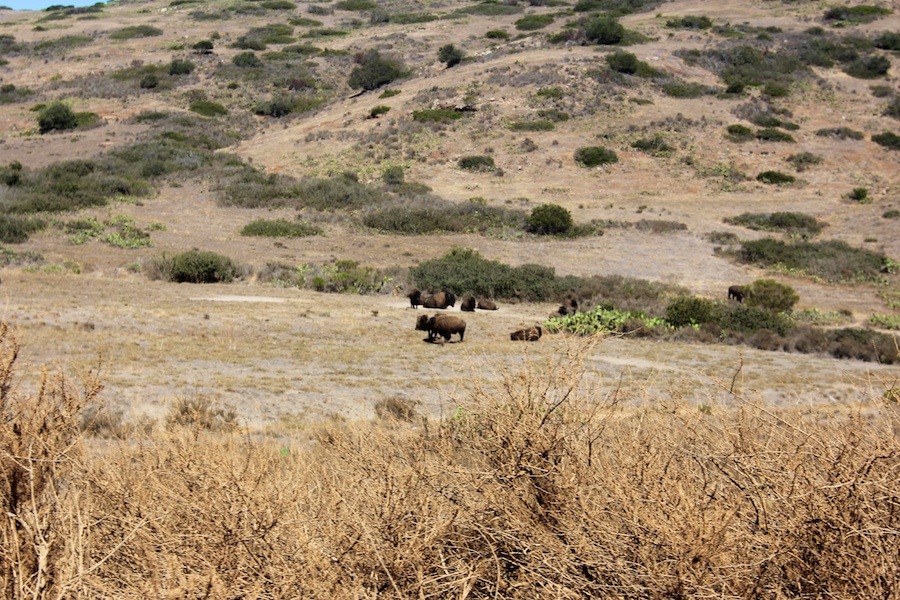
Our friends are lounging about

How many can you spot?

They are taking a "dust bath" to rid themselves of little friends
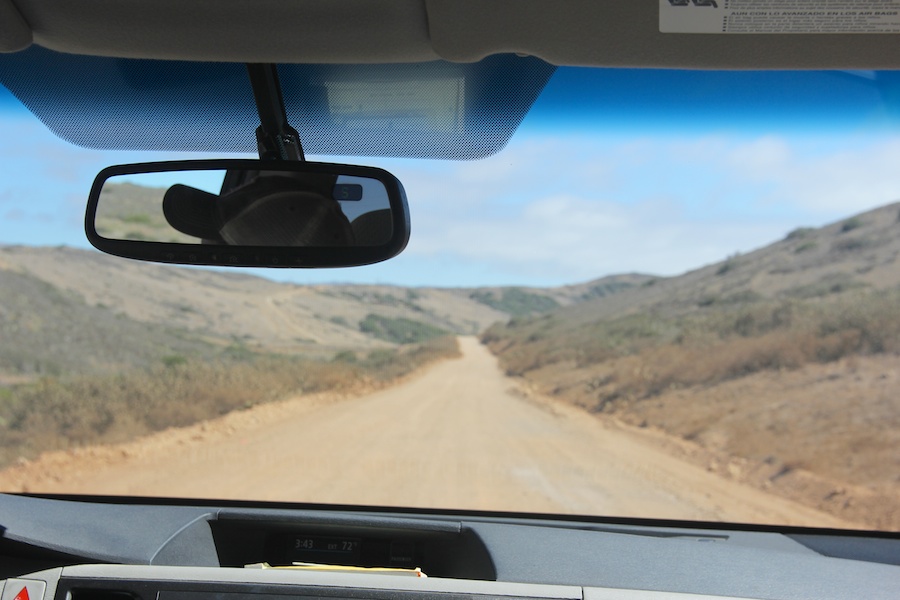
The road was bumpy

He found the shade
A Winery Is Under Construction

It is producing grapes today that are flown to northern California for processing
Did You Know? - Santa Catalina Island, Calif.—With its second harvest in and first vintage bottled, Rusack Winery will debut the wines from its Catalina Island vineyard this year. The historic event represents a long-held dream of Geoffrey and Alison Wrigley Rusack, owners of 7,000-case Rusack Vineyards in Solvang, Santa Barbara County. Alison Rusack's great-grandfather William Wrigley Jr. bought the Santa Catalina Island Co. in 1919.
The company still owns all developable land on the island, including El Rancho Escondido (Hidden Ranch) on the southwestern coast of the rugged, 76-square-mile Pacific island 22 miles from Los Angeles. In 2007, the Rusacks planted their first grapes at Rancho Escondido.
Today, just more than 2.5 acres are planted to Pinot Noir; 1.5 acres to Chardonnay and about half an acre to a unique clone of Zinfandel. According to Rusack winemaker John Falcone, Geoff Rusack discovered Zinfandel vines growing wild on nearby Santa Cruz Island. Part of Channel Islands National Park, Santa Cruz had been home to a winery in the late 1800s.
Rusack obtained permission to take cuttings from the vines. Identified by University of California, Davis, as Zinfandel, then propagated and planted, the Channel Islands Zinfandel selection is unique to Rusack Vineyards. Often shrouded with fog when glimpsed from the California Coast, Catalina is classified as an "upper Region 1-lower Region 2" growing region, Falcone told Wines & Vines.
Yields so far are low, and the 2010 crop was notably shorter than in 2009: Only about 2 tons of Pinot Noir were harvested this year, due to clusters that weighed in at about half of 2009's crop. Pinot Noir measured 24.5°Brix, about Falcone's target. Chardonnay yielded about 1.5 tons at about 24°Brix after the first day of a heat wave.
Falcone said acids tend to be "a little higher than we're use to on the mainland"—about .75 to .85 for Pinot Noir and Chardonnay. This year, the Channel Islands Zinfandel produced about three-quarters of a ton. Hazards of island viticulture Catalina Vineyards
The vineyards at El Rancho Escondido are thriving, but island viticulture presents challenges. Photos: Rusack Vineyards. Small clusters weren't the only factor that reduced yields this year. The vineyard, certified organic by CCOF, was besieged by yellow jackets at harvest time.
Crews imported from the mainland were forced to hand-pick at night to avoid the stinging pests. "Conservation on the island, and for this project, is a big issue," Falcone noted. "We do have some irrigation, comingled with spring water. We do minimal watering to supplement rainwater. Salts tend to build up in our soil, and we need to mitigate that."
During crush, grapes are air-lifted to Rusack Winery for processing, understandably an expensive proposition that, Falcone said, will probably not be fully recouped by the yet-to-be-determined bottle price. "It's one of those passions," he said. "Alison's goal is to maintain the island's beauty, but the money has to come from somewhere."
To that end, the Rusacks plan to install a tasting room, refurbish the Rancho and, they told the Los Angeles Times, offer horse-and-buggy rides of the island's largely untraveled backcountry.
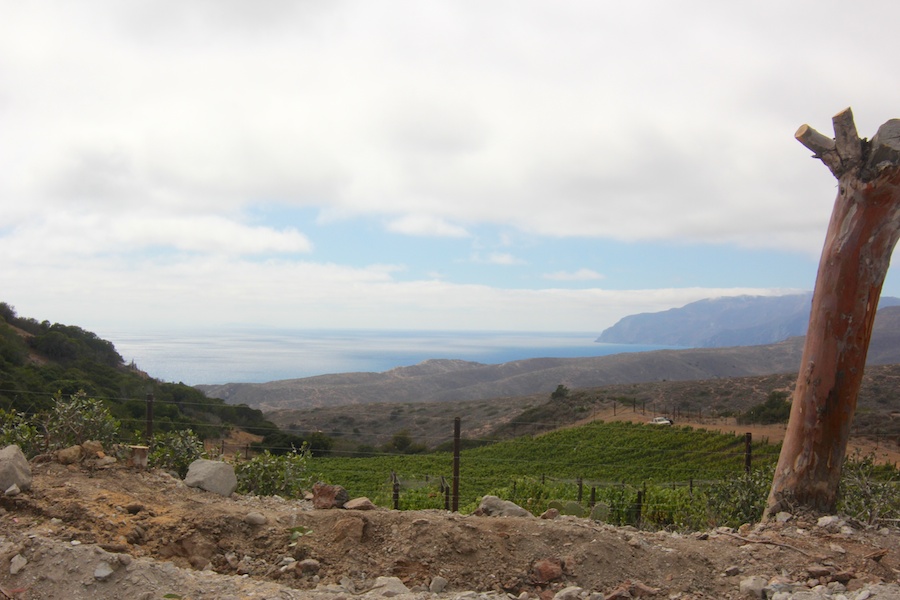
Here comes the June gloom
To The Airport In The Sky


It was the first time we had seen it under blue skies
Did You Know? - The Airport in the Sky occupies a 1,602-foot-tall mountaintop at the center of the Island, 10 miles from the city of Avalon. It's a great destination by tour or shuttle bus, bicycle, on foot whether hiking the Trans Catalina Trail or walking over from Black Jack, or of course, via private or chartered small plane. Its single 3,250-foot-long runway was constructed by blasting and leveling two adjacent peaks, then using the resulting debris to fill in the gaps.
The DC-3 Gifts & Grill restaurant is famed for its buffalo burgers. You can also get regular beef, chicken, and vegetarian burgers, other sandwiches, and Mexican specialties (including buffalo tacos). During the summer, don't miss out on the Grill's Barbecue's featuring live music from Island band Hot off the Range. Call (310) 510-2196 for reservations.
Supplies for the island are delivered via Douglas DC-3 aircraft daily. There are no scheduled passenger flights to or from the airport. It is also known as the Airport in the Sky due to the fact it lies near the island's highest point at an elevation of 1,602 ft (488 m) All roads to the airport from the island's population centers climb steeply upward.

The hangar reveals the altitude of 1602 feet about sea level

The birthday girl
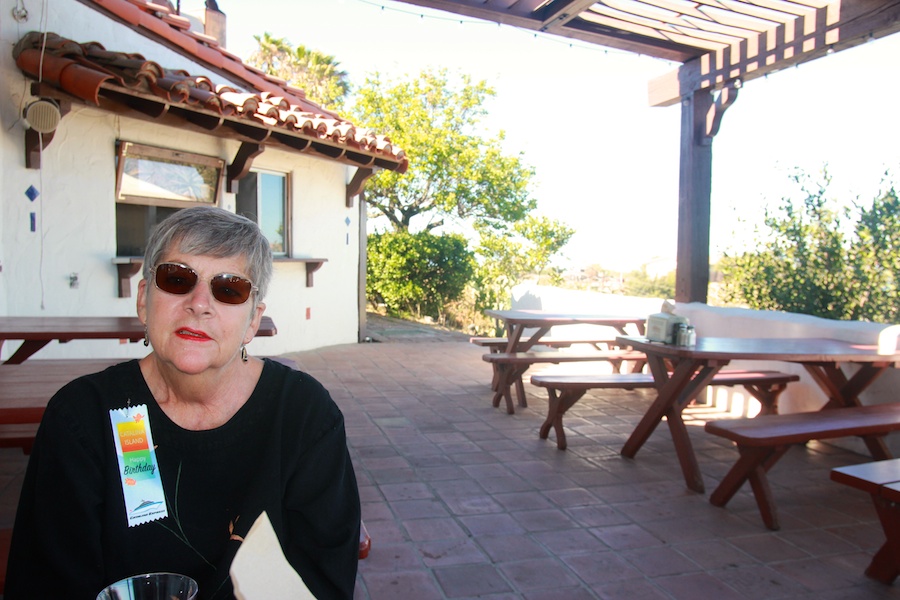
Neat patio and view
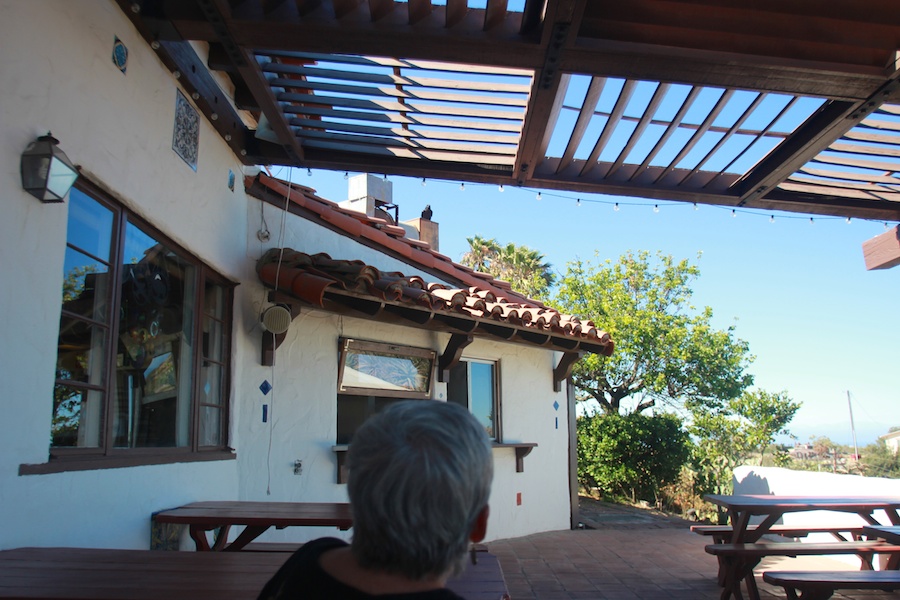
We had a big black crow on the roof and he was talking to us

Our view from the patio

Santos and Sue share stories

The Airport Restaurant was cute
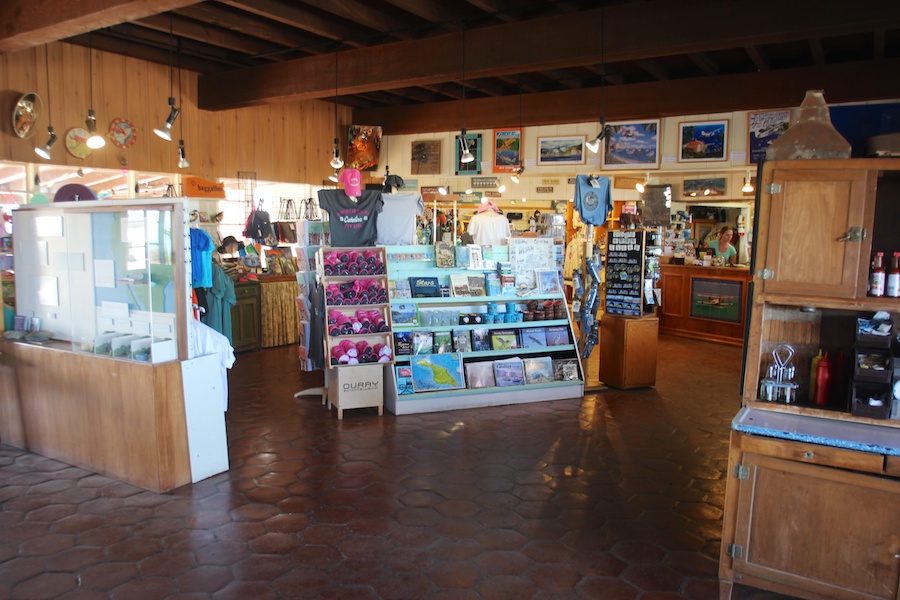
The souvenir shop had all sorts of goodies

An amazing collection of animals on the island
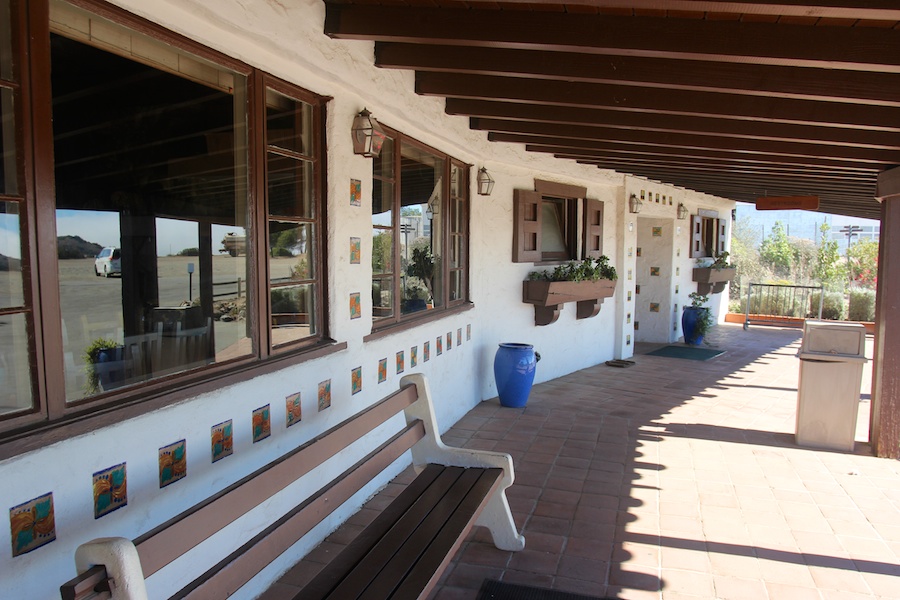
We are heading for the taxi
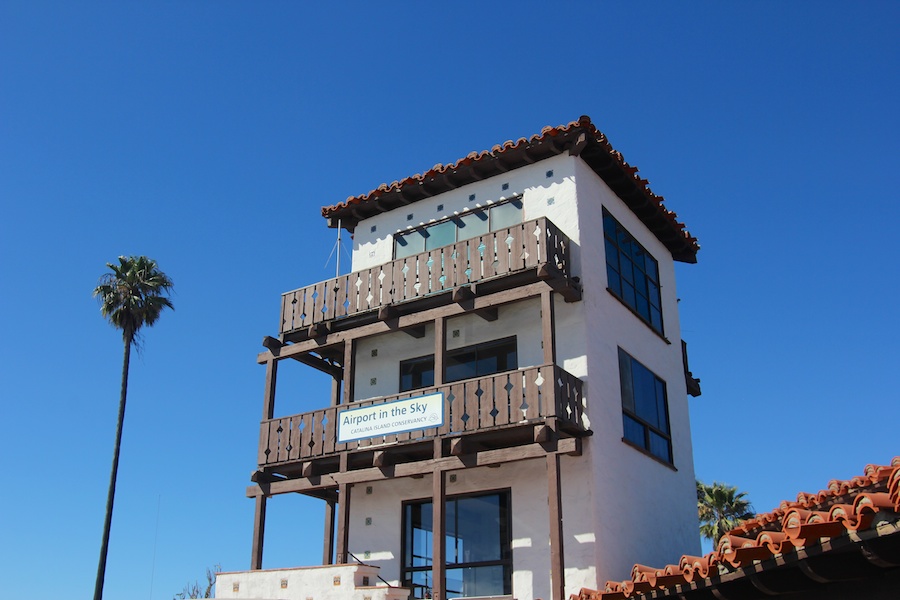
The control tower
Did You Know? - Construction on the airport was completed in 1946. Prior to this time the Island was accessible only to amphibious aircraft. The runway was built by blasting away the tops of two mountains and using the 200,000 truckloads of rock to fill the gap between them.
General information number for the airport and terminal is (310) 510-0143. Call 800-255-8700 for weather information.
Landing hours & fees Please contact the airport at the above phone number for current hours and fees.
No fuel is for sale.
The Runway Cafe, with both indoor and outdoor seating, is open from 8:30 am until 4 pm daily. Try the famous buffalo burgers! Call 310-510-2196 for info.
Catalina Island Nature Center is a open-air exhibit about the flora and fauna of the Island, its geology, and the history of its early inhabitants. It's run by the Catalina Island Conservancy. There is a lovely garden featuring native Catalina plants and cacti, and showing all five of the Island's native plant communities.
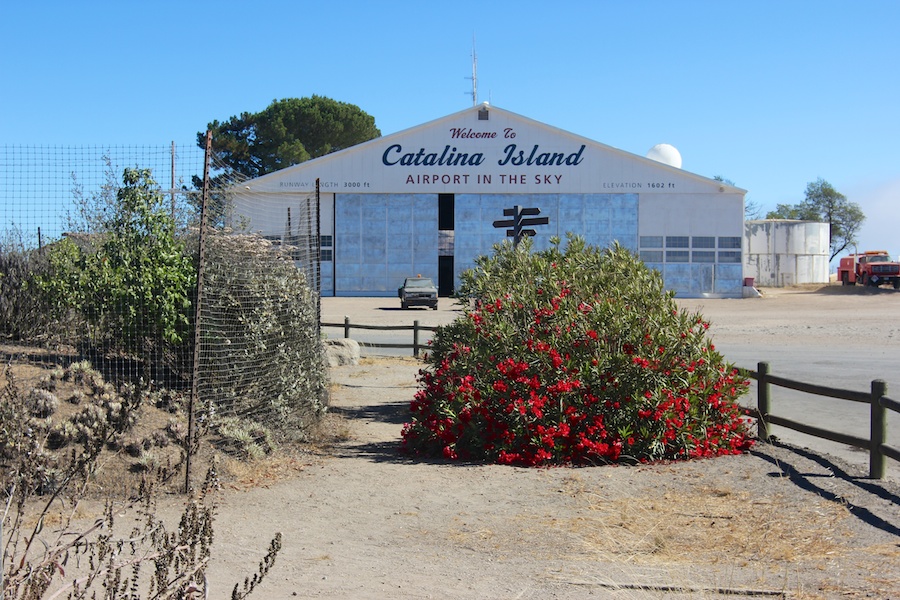
Natural fauna were on display
Did You Know? - The airport originally opened as "Buffalo Springs Airport" in the late 1930s and was made by leveling off the top of a hill.
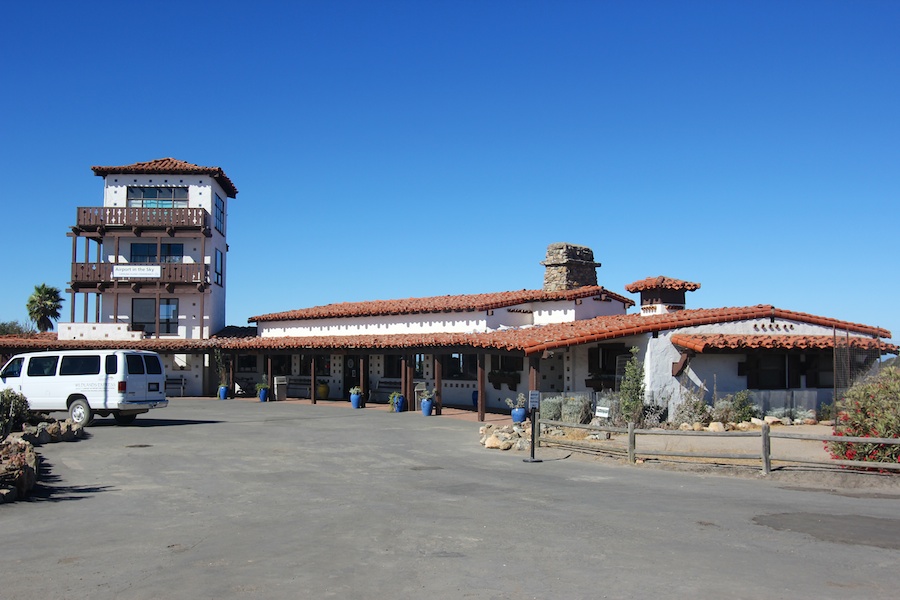
Quite picturesque

The Wrigley Hangar
Did You Know? - The Wrigley family - who owned Santa Catalina Island for decades - used to keep their DC-3 in the large hangar at the airport.
Completing The Loop... On Our Way To Avalon

A baby fox suddenly appears

Brave little sucker
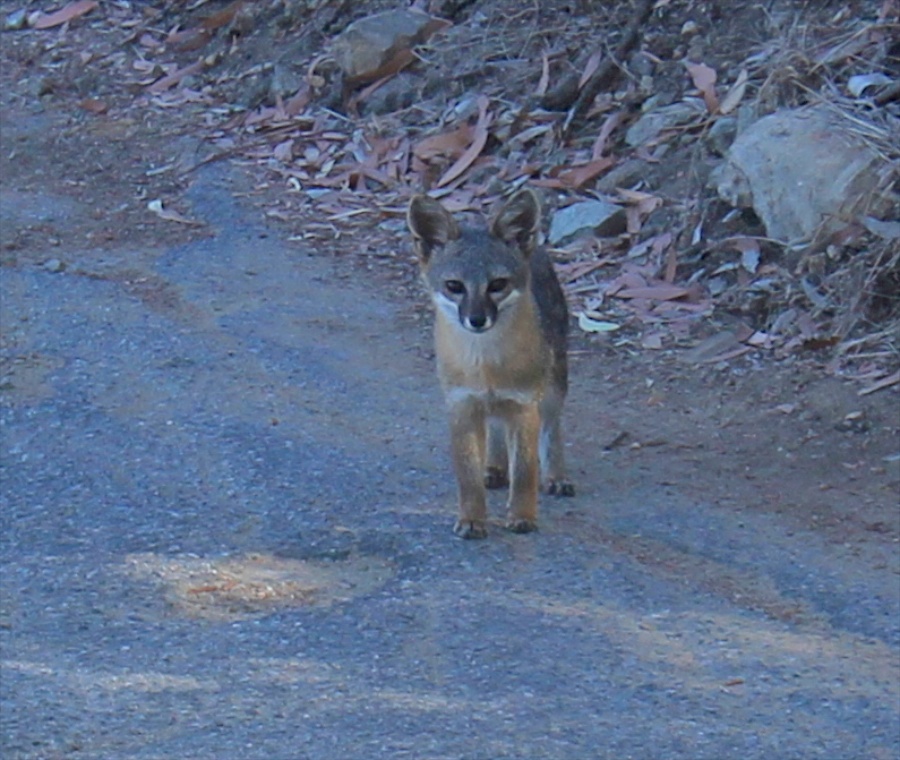
Oh oh... He looks hungry

Avalon appears before us

It is a pretty location

The famous Catalina Alligator was visible
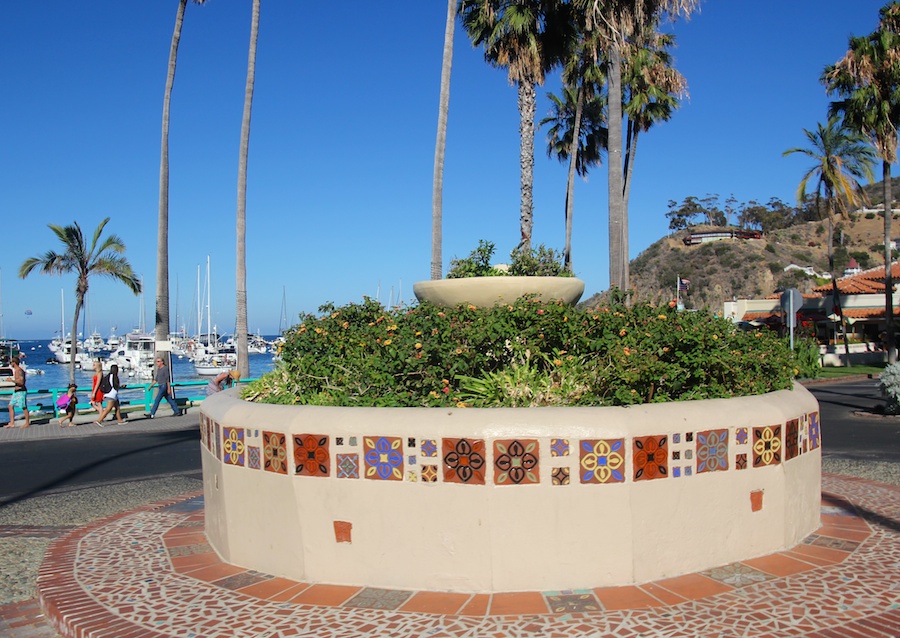
Back to civilization
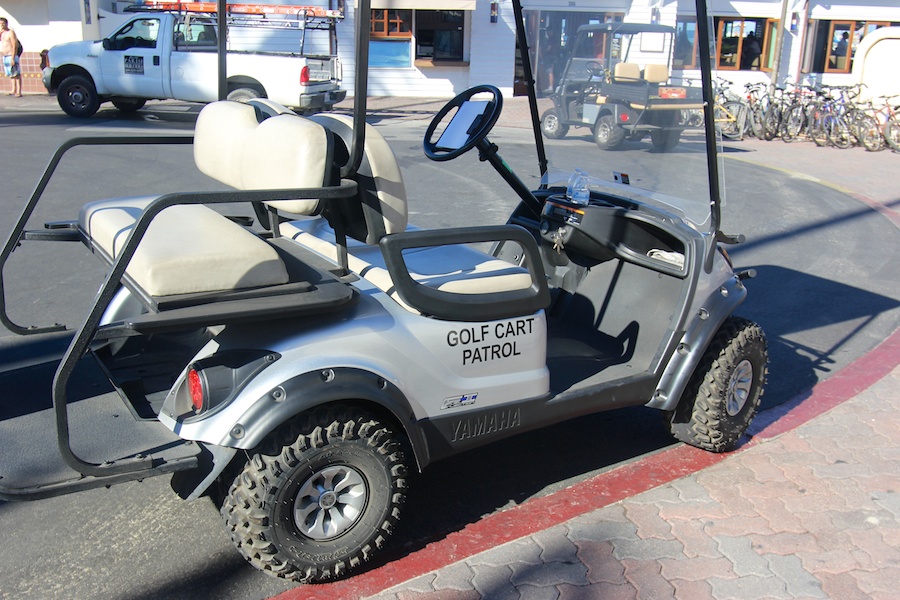
Funny
Ristorante Portofino Was Our Next Stop

We were full but we found a dessert to split... Oh, and some wine

The staff knew us so we got the entire gang singing "Happy
Birthday"
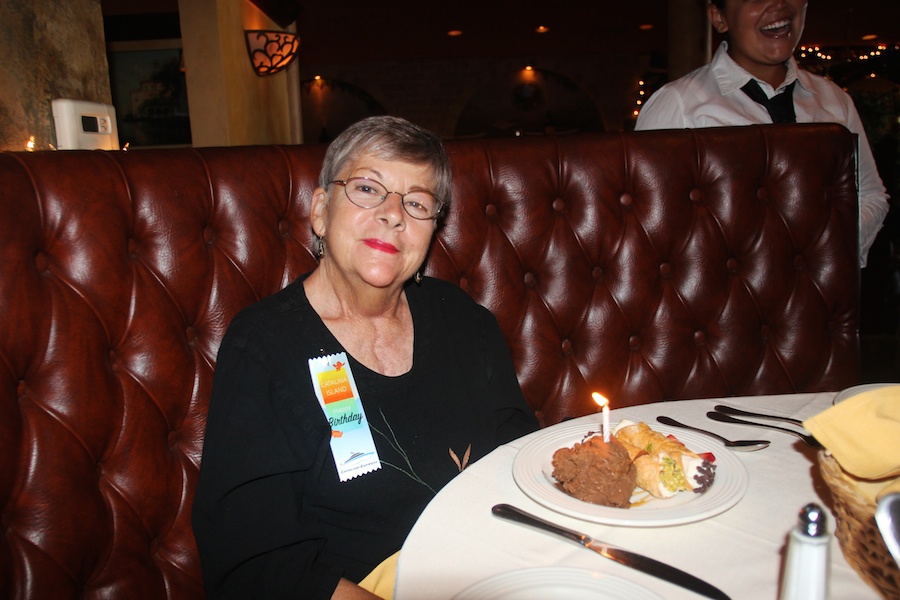
Complete with a candle
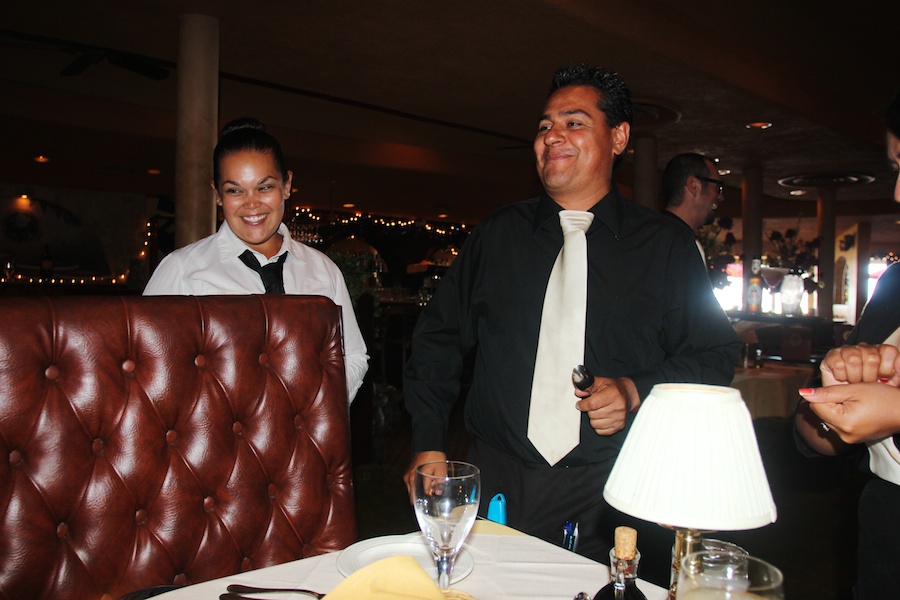
All smiles

Just us.... We were here together!

We had a serious moment

She gets windy and the flame disappears

Someone is happy
To The Ship!

The sun is lowering in the sky
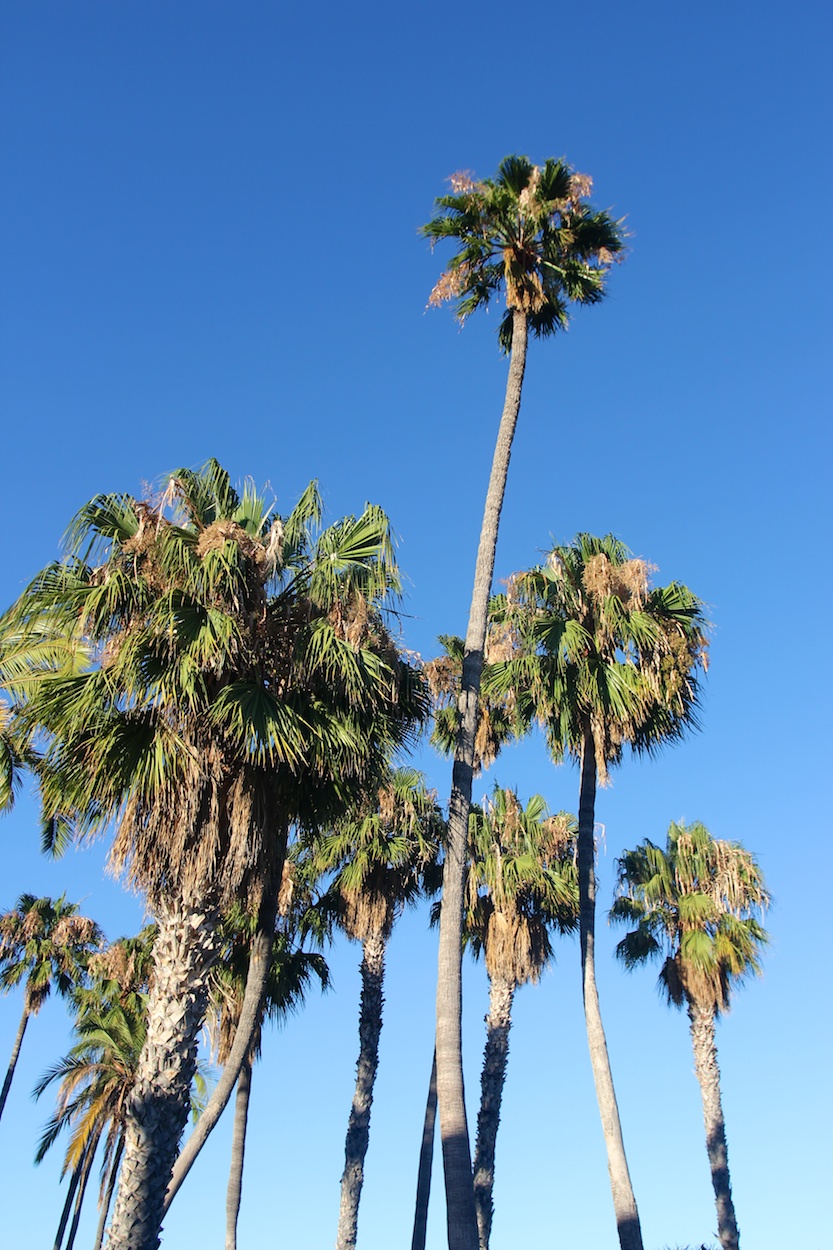
The palm trees were beautiful
Did You Know? - There are about 2600 species of palm trees, most of them living in tropical, subtropical, and warm temperate climates.
Palms are one of the best known and most widely planted tree families. They have held an important role for humans throughout much of history. Many common products and foods come from palms. They are often used in parks and gardens that are in areas that do not have heavy frosts.
In the past palms were symbols of victory, peace, and fertility. Today palms are a popular symbol for the tropics and for vacations

Joe's is slowly disappearing

The homes on the hill still have sunlight
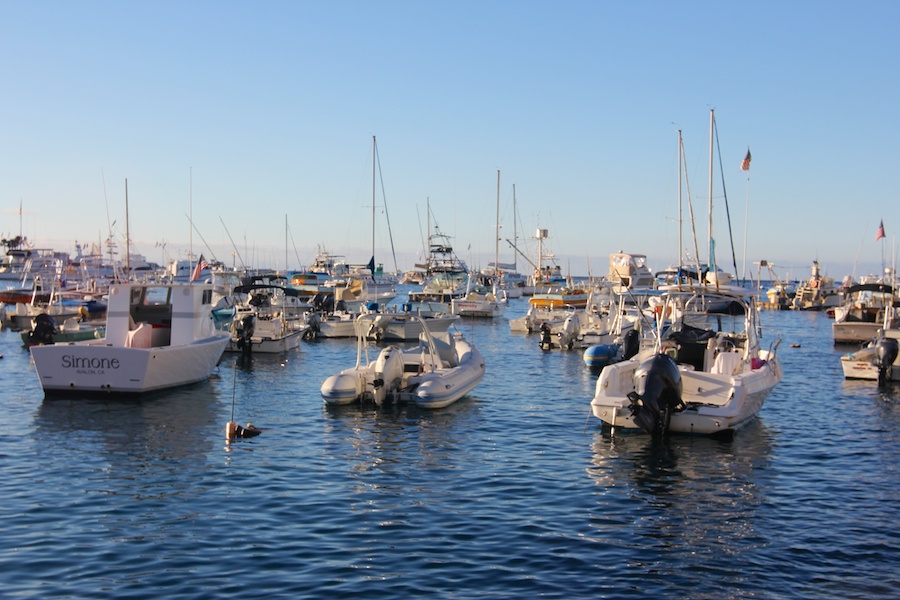
The harbor was full and peaceful

The Casino is still the most identifiable building

Our ship is ready to go!
Did You Know? - Catalina Express runs throughout the entire year, and she runs up to thirty trips a day. This ferry service has been running for over thirty years.
Catalina Express was founded in the year of 1981. The founders of this company include Doug Bombard, Greg Bombard, and Tom Rutter.
There has been over 17 million passengers on Catalina Express over the past thirty years. The company began with only one vessel, but now the company runs over eight high-speed vessels. Each vessel has the ability to carry about 500 visitors per trip across the channel.

The cooling water for the engines are pouring out below

Bye for now
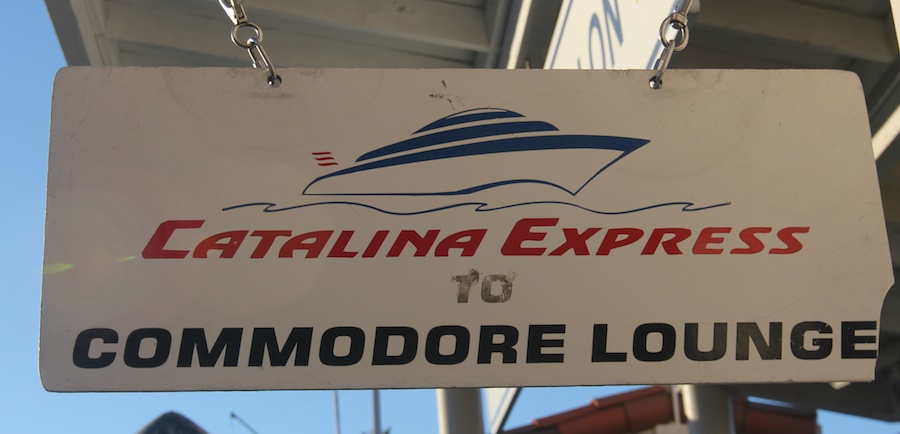
We love the Commodore Lounge

Wish it were wet in the back country

Here we go!
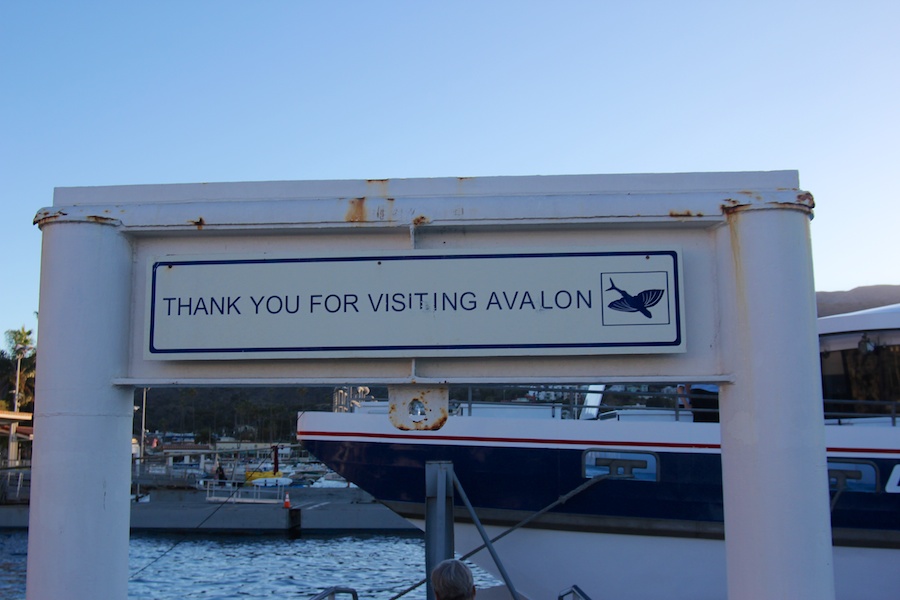
You are welcome
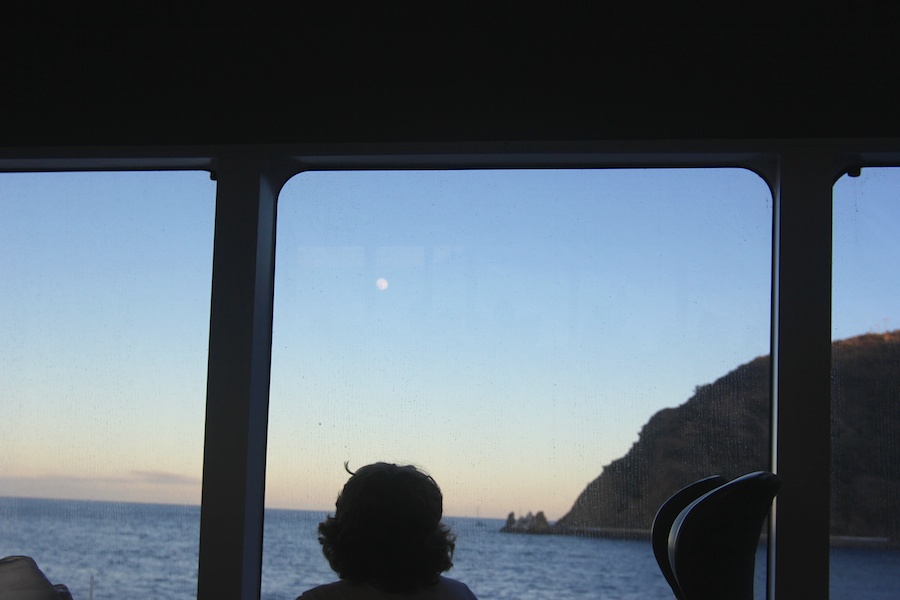
See the moon???

Best shot we could get considering the windows and motion

Moon on one side and....

Sunset on the other

Arrival in Long Beach
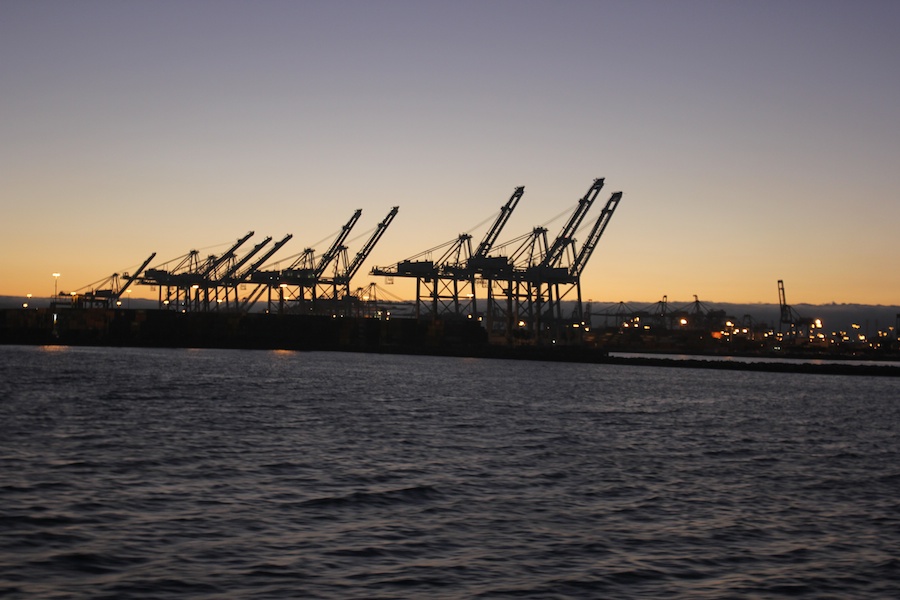
Are they waving at us???

Love the skyline

The Queen awaits our arrival

Lights are coming on

We made it safe and sound
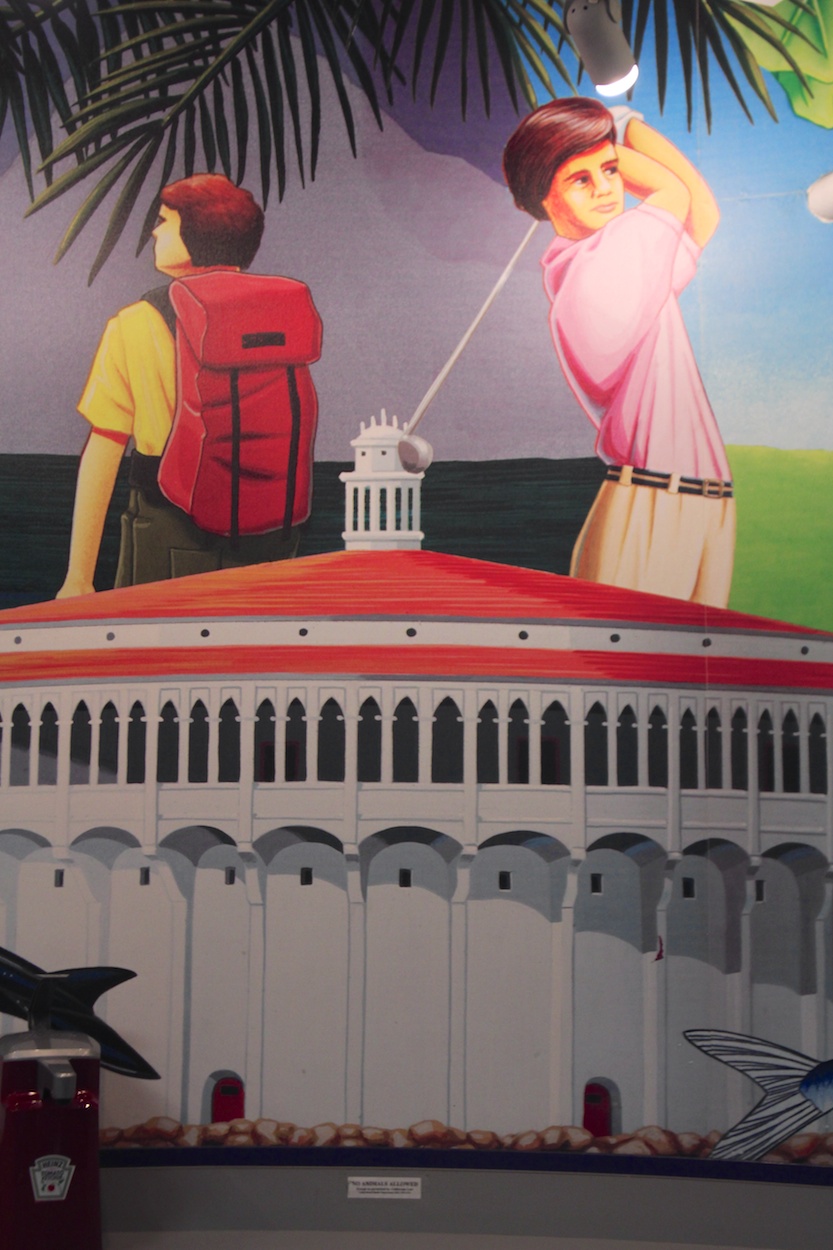
Oh dear... We must return to play golf
